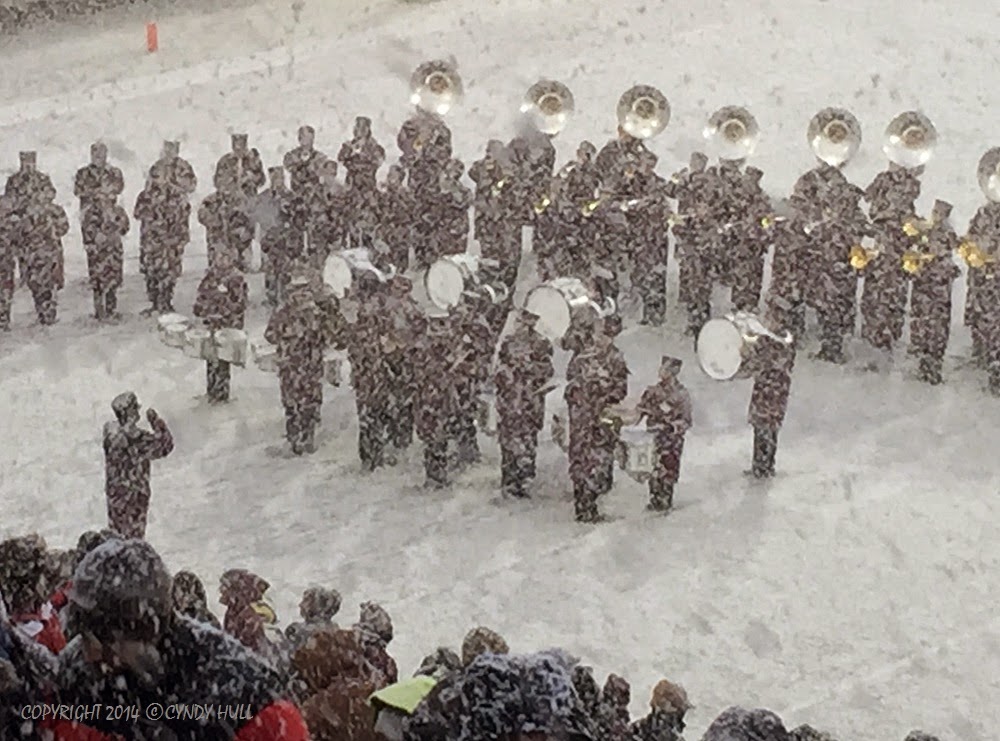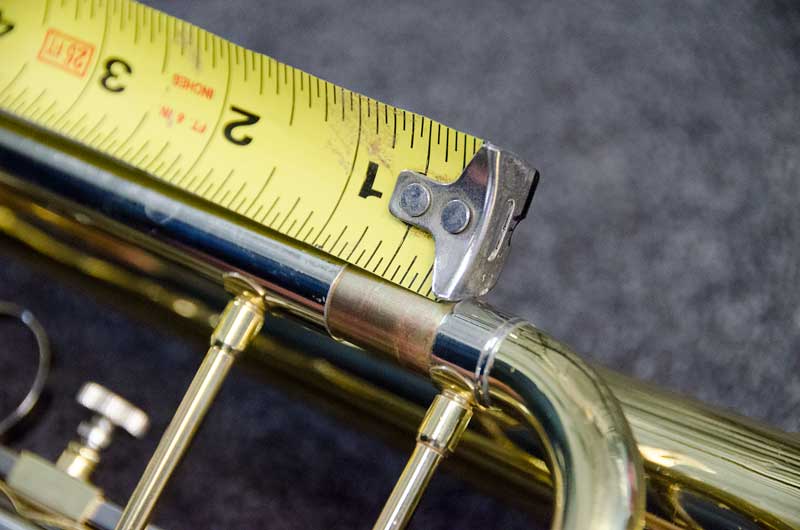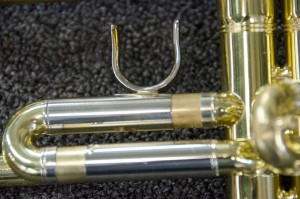
Brr! If you are reading this from anywhere in the Midwest, I sure hope you are somewhere warm as the outside temperature continues to drop. In saying that, I thought this would be a pertinent time to talk about how to care for your instrument during the cold months. By following just a few simple rules of thumb, you can avoid any winter-related issues with your band (or orchestra) instrument.
“If you’re uncomfortable, your instrument is uncomfortable.” I have heard my colleagues in our Encore Orchestral Strings shop say this many times, and it definitely holds true for band players as well. Just as hot or wet weather can wreak havoc on wood and metal instruments, the same is true for cold weather. As the temperature drops, the tubes of metal instruments contract, then expand when it is warmed up again. This process happening repeatedly can cause alignment and adjustment issues, as well as cause any pads to begin to shrink and leak. Wooden instruments during the winter months are extremely susceptible to cracking. If the instrument is cold and you immediately start to play without warming it slowly, the inside of the instrument will heat faster than the outside causing it to expand and crack. Indoor environments can also be very dry while the heat is running during the winter months. This is especially concerning, again, for wooden instruments. Make sure that you have some sort of humidifier or are at least checking the instrument every few days to be certain that it does not dry out.
So what happens if you do need to play and you are stuck with a cold instrument? First, never leave an instrument in the cold car for long periods of time. Also, if able, put the instrument (in its case) inside your coat to and from the car. Once inside, you can remove the instrument from the case and hold it close to your body giving it gradual body heat to slowly warm to room temperature. Finally, take some extra time blowing long notes in your normal range and dynamic to continue to warm the inside of the instrument slowly.
If your instrument is having problems during the cold winter months, don’t hesitate to bring it in to Paige’s Music, where our full-service repair shop can take a look at it and bring it back to perfect playing condition!

All brass instruments come with slides that move. The largest one is the “main tuning slide”. The others are used to tune individual notes. Some may need to be pulled out to make the instrument flatter, others are pushed in to make the instrument sharper. In the case of trombones, not only is there a “main tuning slide” but each note can be tuned by using the hand slide.
To start with, brass instruments are designed to play sharp. This can be corrected by moving the “main tuning slide” out about ¾ of an inch. When you play using a tuner you should see the instrument playing in tune with the “main tuning slide” pulled out about that far. This isn’t a rule, but a suggestion. You may find that your instrument plays in tune somewhere near to this measurement depending on the player, the brand of instrument and the condition of the instrument.

Some instruments can be adjusted while playing. Trumpets, trombones and horns are found in this category. With the help of rings, hooks, saddles and well-lubricated slides notes can be adjusted while playing.
This brings me to the most important part of tuning. None of this matters if you don’t listen. Your ears are the most important “tuner” available. Listen with your ears and try to play in tune with those around you. Adjust your tuning slides and listen while you play. Watch your tuner and listen to your sound. Make an effort to play in tune. Just because the electronic tuner says that one note is in tune, doesn’t mean that all the notes you play are in tune. Listen and adjust.
Other things that can impact playing in tune are the condition of the mouthpiece and instrument. Are they clean and in good condition? Are their large dents in the mouthpiece, lead pipe and bell? Do the valves work easily? Are the bumpers in the pistons the correct size? Do the water keys leak?
This is only the beginning. As you progress in your musical career you’ll discover more ways to play in tune. It all starts with your ears, and an instrument in good shape. Practice playing in tune and listen, listen, listen.